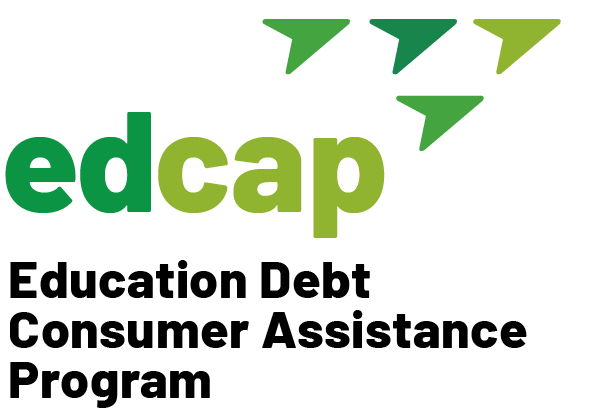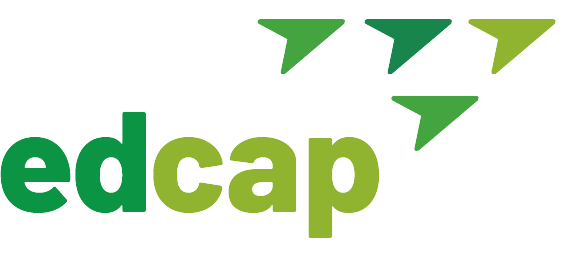Consolidation allows you to combine one or more federal education loans into a new Direct Consolidation loan. There is no application fee to consolidate your federal education loans into a Direct Consolidation Loan.
The Facts
- Federal student loans can be consolidated via studentaid.gov.
- You can only consolidate federal loans and can’t include private loans in a federal consolidation.
- Consolidation does not reduce your interest rate. Your new interest rate will be fixed at the weighted average of the interest rates on the loans being consolidated, rounded up to the nearest one-eighth of one percent.
- If you have both unsubsidized and subsidized loans, when you consolidate, you will still end up with two loans; one for each of those two loan categories.
Benefits of Consolidating by June 30, 2024
- One Loan with Just One Monthly Bill
- Reduced Monthly Payments – Consolidation can lower your monthly payment by offering extended repayment terms, up to 30 years, and access to additional income-driven repayment plans.
- Access to Income-Driven Repayment Plans – Consolidating non-Direct Loans, like FFEL Program or Federal Perkins loans, may provide access to more income-driven repayment plans, potentially lowering your monthly payments.
- Access to Loan Forgiveness Programs – Consolidating non-Direct Loans can open up forgiveness options like Income Driven Repayment Forgiveness (IDRF) and Public Service Loan Forgiveness (PSLF).
- Retroactive credit towards forgiveness through the IDR Account Adjustment for past periods in repayment, even while not on an IDR plan, time spent in forbearance or deferment, and months prior to consolidation. Learn more about what qualifies.
- Earn the highest payment count across all loans: If you have multiple loans with different payment histories, they will be credited with the highest payment count possible after consolidation (based on the oldest loan), bringing new loans even closer to forgiveness!
Who benefits from consolidation?
If you have non-Direct loans, such as FFEL, Perkins, or HEAL, you must consolidate your loans to qualify for the SAVE repayment plan and for forgiveness programs, like Public Service Loan Forgiveness (PSLF) and Income Driven Repayment Forgiveness (IDRF). See below for more guidance on determining if you have non-direct loans.
If you have multiple direct loans with different payment histories and you consolidate by June 30, 2024, the longest history will be applied to your entire balance, giving you maximum credit towards forgiveness. This applies the highest credit possible and is NOT on a weighted average basis.
- If you’re unsure if your loans will benefit, click here to find out.
You must consolidate by June 30, 2024 to get the full benefit of the IDR Account Adjustment, a one-time revision which will award retroactive credit toward forgiveness programs on a very generous basis.
How do you know if you have non-Direct loans?
- Go to studentaid.gov.
- Log into your account.
- Go to “My Aid” (click your name in the top right-hand corner and select it in the drop-down menu).
- Scroll down to “Loan Types.”
- Click on each loan category that has a loan balance.
- If the loan type name says FFEL, Perkins, or HEAL, you will need to consolidate.
Determining if you need to consolidate,
a video tutorial:
Consolidation considerations based on the type of loans you have:
Direct Loans Only
- If all your loans are “Direct”, you have the option to consolidate.
- Why would you consolidate? For administrative simplicity and to get the highest payment count possible.
- Beware of the April 30, 2024 deadline.
Direct Loans and FFEL/Perkins
- If you have a mix of Direct Loans and non-direct like FFEL/Perkins, you MUST consolidate your FFEL/Perkins to access SAVE and forgiveness programs.
- You can either consolidate the non-Direct loans only or consolidate all your Direct and non-direct (FFEL/Perkins) together.
- Beware of the April 30, 2024 deadline.
- Caution: If you are working towards a forgiveness program, consolidate by April 30, 2024 to get the maximum credit awarded under the rules of the IDR Account Adjustment.
FFEL/Perkins/HEAL
- If all your loans are non-Direct, you MUST consolidate to access SAVE and forgiveness programs.
- You should aim to consolidate by April 30, 2024, to get the maximum credit awarded under the rules of the IDR Account Adjustment.
Parent Plus Loans
- Unconsolidated Parent Plus loans are not eligible for ANY Income-Driven Repayment (IDR) plans.
- They can gain access to the ICR plan only through consolidation which will make them eligible for PSLF and IDRF.
- If you have two or more Parent Plus loans you may be able to access the new SAVE Plan through the temporary Double Consolidation Loophole. Learn more.
- Caution: If you consolidate Parent Plus loans with your own student loans, the entire consolidated balance will be limited to Standard repayment plans and the ICR plan. You will not have access to more affordable IDR plans such as SAVE. Seek advice before attempting this kind of consolidation
What happens if you consolidate after June 30, 2024?
If you are pursuing Public Service Loan Forgiveness (PSLF).
- You will get retroactive credit on Direct loans on a weighted average basis. Note: You should file the PSLF Certification Forms and get a qualifying payment count on your loans before you consolidate.
- If you have non-Direct loans and consolidate after April 30, 2024, you will receive no retroactive credit towards PSLF.
If you are pursuing Income Driven Repayment Forgiveness (IDRF).
- Starting July 1, 2024, you will be able to consolidate Direct and FFEL loans and get retroactive credit towards IDRF on a weighted average basis.
- Caution: Between May 1, 2024-June 30, 2024, If you are pursuing IDRF, seek advice before consolidating.
How to Consolidate via Studentaid.gov—A practical guide.
- Go to studentaid.gov/loan-consolidation/
- Log in using your FSA ID/Password.
- Start, complete, and submit the application.
Some tips:
- Select “Do Not Delay” processing when you are asked.
- If you are pursuing Public Service Loan Forgiveness, select MOHELA as your student loan servicer.
- If you are married, you will need your spouse’s name, DOB, and Social Security number.
How to consolidate, a video tutorial:
What’s Next?
- The servicer you selected will receive and process your student loan consolidation.
- It usually takes 6-8 weeks for the consolidation to be completed.
- You will be notified by the servicer that they have received your application. They will also notify you of the loan consolidation information to confirm it is accurate. If there are no issues, they will automatically proceed and finalize the consolidation.
Consolidation FAQs
What Is student loan consolidation?
- Student loan consolidation is the process of combining multiple federal student loans into one or two loans with a single monthly payment.
- This simplifies the repayment process. Consolidation is also a means of converting a single loan (such as a FFEL or Parent Plus loan) into a Direct Consolidation loan.
Am I eligible for loan consolidation?
- You are typically eligible for federal loan consolidation if you have one or more eligible federal loans.
- Some defaulted borrowers can use consolidation as a way to bring their loans back into good standing.
Is loan consolidation the same as refinancing?
- No, loan consolidation and refinancing are different. Consolidation combines existing federal loans into one or two Direct Consolidation loans, while refinancing involves taking out a new private loan to pay off existing loans, potentially with different terms.
- Refinancing is often used in the private sector to lower interest rates. You cannot reduce your interest rate through the federal student loan consolidation process.
How does loan consolidation affect my interest rate?
- Your consolidated loan’s interest rate is the weighted average of the interest rates on the loans being consolidated, rounded up to the nearest one-eighth of a percent.
What repayment plans are available After Consolidation?
- After consolidation, you can choose from various federal repayment plans, including income-driven plans, extended plans, and more, depending on your eligibility.
Will consolidation lower my monthly payments?
- Consolidation may lower your monthly payments by extending the repayment term or giving you access to an IDR plan but it may not necessarily reduce your overall interest costs.
Can I include Parent PLUS loans in consolidation?
- Yes, you can include Parent PLUS Loans in a consolidation.
- However, this may limit your access to certain income-driven repayment plans.
- If you consolidate loans you borrowed for your own education and Parent Plus, you would only be eligible for one Income Driven Repayment Plan—ICR—which may impact your repayment amount.
What happens to my loan benefits after consolidation?
- Some benefits, such as Public Service Loan Forgiveness (PSLF), may be affected by consolidation.
- Make sure you understand how it impacts your specific loan benefits.
Are there fees for loan consolidation?
- There are no fees for federal loan consolidation.
- It’s a free service provided by the government.
How long does the consolidation process take?
- The consolidation process usually takes a few weeks to a couple of months.
- It depends on various factors, including your loan servicer’s processing time.
Can I change my mind after consolidation?
- Once the consolidation is completed, it cannot be undone.
- Be sure to carefully consider your decision before proceeding.
What are the pros and cons of loan consolidation?
- Pros may include simplified payments and access to more affordable repayment plans and forgiveness programs.
- Cons may include potentially higher overall interest costs and the loss of certain borrower benefits.
- Evaluate your unique situation to determine if consolidation is right for you.
- Learn more about the pros and cons here.




